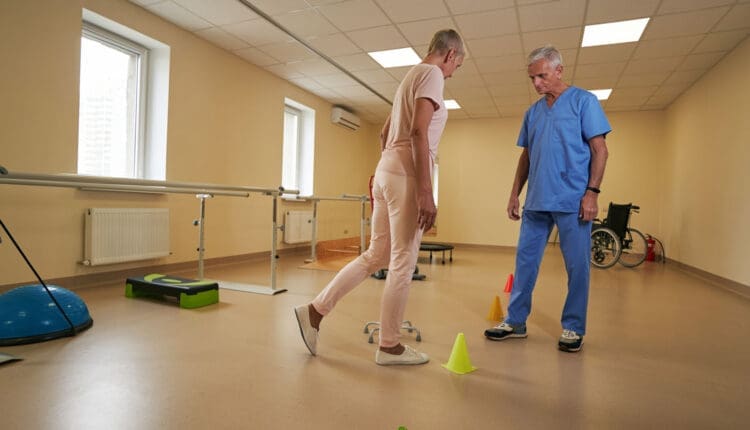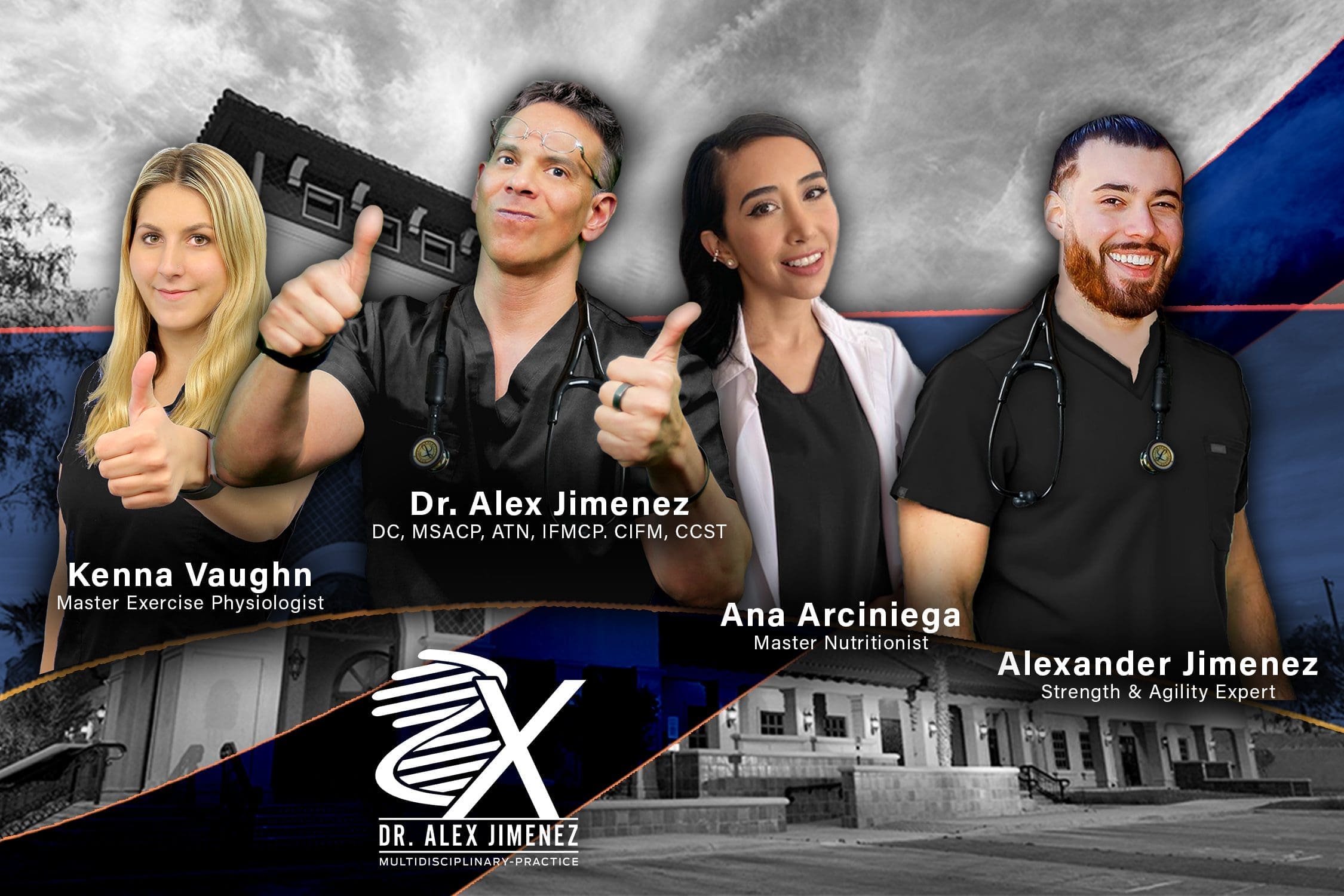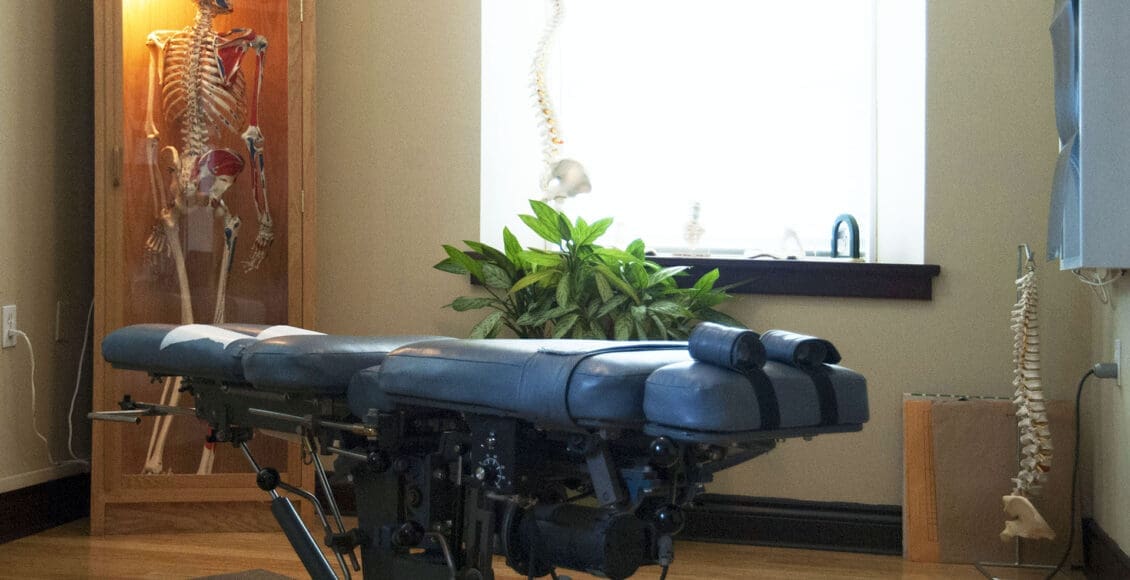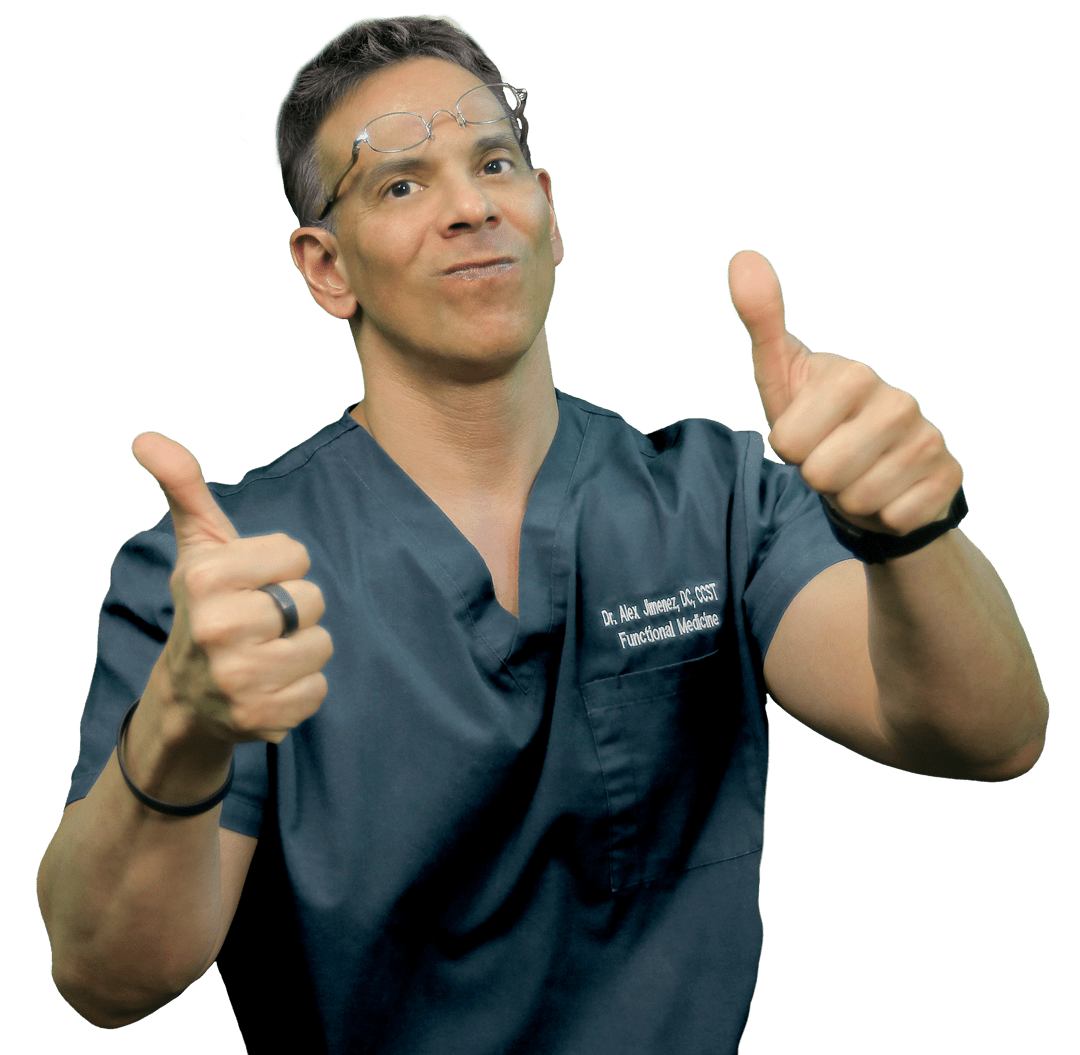Table of Contents
Musculoskeletal Injuries After Motor Vehicle Accidents: Chiropractic Solutions for Pain, Function, and Recovery

Understanding Musculoskeletal Injuries After a Car Accident
Car accidents are one of the leading causes of musculoskeletal injuries in the United States. These injuries affect the muscles, bones, tendons, ligaments, and nerves—often with lingering effects that interfere with daily life. While some people recover within weeks, others experience chronic pain or limited mobility for months or even years.
Musculoskeletal injuries after a crash can be both immediate and delayed. Common examples include:
- Whiplash
- Herniated or bulging discs
- Torn ligaments
- Joint dislocations
- Nerve compression or radiculopathy
Whether the trauma is mild or severe, even a low-speed crash can cause deep structural injuries. These conditions may lead to headaches, neck and back pain, arm or leg weakness, tingling, and loss of function if left untreated (Florida Physical Medicine, n.d.).
Beyond the physical symptoms, the emotional toll of these injuries—such as anxiety about mobility, job loss, or disability—can delay healing.
Citation: Florida Physical Medicine, n.d.
Will Recovery Be Full—and How Long Will It Take?
A common question after an accident is, “Will I fully recover?” The answer depends on the severity of the injury, how quickly you receive care, and the type of treatment you pursue.
For many, soft tissue injuries such as sprains, strains, or whiplash can take weeks to months to resolve. But without the right care, these injuries can become chronic. Studies show that untreated musculoskeletal damage may lead to long-term inflammation, nerve sensitivity, and even spinal degeneration (Torts Law, n.d.).
The key to recovery lies in early intervention and a multidisciplinary approach that includes imaging, functional assessments, and care from experienced professionals such as chiropractors and nurse practitioners.
Citation: Torts Law, n.d.
Why Chiropractic Care Is Essential After an Auto Accident
Chiropractic care offers a non-invasive, drug-free solution to treating musculoskeletal injuries after an auto accident. Chiropractors specialize in spinal adjustments, joint manipulation, and neuromuscular rehabilitation to relieve pain, improve range of motion, and promote tissue healing.
Benefits of chiropractic care include:
- Reducing inflammation
- Restoring spinal alignment
- Decreasing nerve compression
- Improving posture and mobility
- Enhancing circulation to injured tissues
When vertebrae or joints are out of alignment due to trauma, surrounding nerves can become irritated. Chiropractic adjustments help relieve that pressure and reestablish proper nerve flow—restoring the body’s natural healing ability (Hogan Chiropractic, 2024).
Citation: Hogan Chiropractic, 2024
Chiropractic Care vs. Traditional Treatment Approaches
Traditional treatments like pain medications or surgery may mask symptoms without addressing the root cause of injury. While they have their place in acute trauma care, many patients report lingering symptoms if musculoskeletal misalignments or nerve entrapments remain unresolved.
Chiropractic care stands out by correcting underlying spinal misalignments and facilitating neuromuscular balance. Chiropractors assess the biomechanics of movement, identify soft tissue damage, and use targeted adjustments to restore function.
In cases like whiplash, early chiropractic treatment can shorten recovery time and prevent long-term complications like joint stiffness, tension headaches, or facet joint degeneration (Artisan Chiro Clinic, n.d.).
Citation: Artisan Chiro Clinic, n.d.
Dr. Alexander Jimenez: A Dual-Scope Expert in Injury Care and Legal Support
In El Paso, Dr. Alexander Jimenez, DC, APRN, FNP-BC, brings a rare combination of chiropractic expertise and advanced nurse practitioner training. As a dual-scope provider, he offers comprehensive diagnostics, advanced imaging interpretation, physical assessments, and rehabilitation, all under one roof. His integrative clinic supports both clinical healing and the legal-medical documentation needed for personal injury cases.
Dr. Jimenez’s treatment model includes:
- Functional exams and orthopedic testing
- In-house imaging referrals (MRI, CT, X-ray)
- Hands-on chiropractic adjustments
- Coordination with pain management or orthopedic specialists
- Detailed documentation for insurance or legal claims
This integrated approach ensures that patients not only recover physically but also receive the legal and administrative support required in injury claims (Jimenez, 2024).
Citation: Jimenez, 2024
Long-Term Consequences of Untreated Musculoskeletal Injuries
One of the most overlooked dangers following a motor vehicle accident is the long-term impact of untreated musculoskeletal injuries. What may begin as minor stiffness or soreness can progress into chronic pain, joint degeneration, nerve damage, or even mental health issues like anxiety and depression if care is delayed.
For instance, whiplash injuries, which are extremely common in rear-end collisions, can result in:
- Cervical instability
- Degenerative disc disease
- TMJ dysfunction
- Brain fog and fatigue
- Depression and mood disorders
According to legal and medical sources, patients who delay treatment may suffer permanent spinal structure changes, including cervical kyphosis and nerve compression (Berry Law, n.d.).
Without intervention, these issues can interfere with work, family life, sleep, and basic activities. Many individuals who skip early care eventually face higher healthcare costs, increased disability, and longer rehabilitation periods.
Citation: Berry Law, n.d.
How Chiropractic Care Improves Mobility and Function
Mobility loss is one of the most frustrating aspects of post-accident injuries. Stiffness in the neck, back, shoulders, or hips can affect walking, turning, lifting, or even sitting comfortably. Chiropractic care is especially effective at restoring range of motion and muscle coordination.
Through precise spinal adjustments and soft tissue techniques like myofascial release, traction, or stretching protocols, chiropractors help reduce inflammation, correct postural issues, and enhance the movement of injured joints and tissues.
When muscles, ligaments, and joints move correctly, it reduces tension on the nervous system and improves:
- Balance and stability
- Muscle strength
- Endurance and flexibility
- Confidence in daily activity
Patients treated by chiropractors often report faster recovery and improved ability to return to their usual activities (Recovery ChiroMed, n.d.).
Citation: Recovery ChiroMed, n.d.
Addressing Emotional and Neurological Effects After MVAs
Musculoskeletal pain doesn’t just affect the body—it also has emotional and neurological consequences. Chronic pain can disrupt sleep, impair memory, and contribute to depression or anxiety, especially when the injury disrupts work or personal responsibilities.
Trauma to the spine or soft tissues can also impact nerve function, leading to symptoms such as:
- Tingling or numbness in the limbs
- Difficulty concentrating (post-concussion)
- Headaches and migraines
- Mood swings or irritability
Chiropractic care supports the central nervous system by reducing spinal cord pressure and improving communication between the brain and the body. This neuro-musculoskeletal balance helps restore emotional regulation, cognitive clarity, and overall mental health (Lonseth Pain, n.d.).
Citation: Lonseth Pain, n.d.
Integrating Nurse Practitioners and Chiropractors in Recovery
One of the most powerful ways to support healing after an accident is integrative care. Nurse practitioners (NPs) and chiropractors can collaborate to address the full range of physical, neurological, and emotional needs.
A nurse practitioner, such as Dr. Alexander Jimenez, can:
- Order imaging tests (MRI, CT scan, X-ray)
- Diagnose medical complications
- Prescribe medication if needed
- Oversee nutritional and functional rehabilitation
Meanwhile, chiropractors focus on hands-on structural care—correcting misalignments, relieving nerve impingements, and improving joint mechanics.
This dual-scope team ensures that no aspect of the patient’s condition is overlooked, from internal inflammation to musculoskeletal dysfunction. The integrated model also enhances patient outcomes by combining clinical precision with functional healing (Wirth Chiropractic, n.d.).
Citation: Wirth Chiropractic, n.d.
Advanced Imaging and Legal Documentation for Personal Injury Cases
Dr. Alexander Jimenez is uniquely positioned in the El Paso personal injury field due to his combined training in chiropractic medicine and advanced practice nursing. This allows him to perform both hands-on adjustments and clinical diagnostics, including ordering and interpreting imaging.
Dr. Jimenez uses advanced assessments to:
- Identify disc herniations, fractures, and soft tissue damage
- Document loss of mobility and neurological impact
- Provide medical-legal reports for attorneys and insurance
- Communicate with orthopedic, neurology, and pain specialists
His clinic, recognized for its dual-scope integration, helps patients not only recover faster but also strengthen their personal injury claims with complete medical documentation. This approach supports both healing and justice (Jimenez, 2024).
Citation: Jimenez, 2024
Excellent—here’s the final portion of your SEO-optimized, high school–reading-level 4,000-word blog post on post-MVA musculoskeletal injuries and the role of chiropractic care.
Chiropractic Care for Soft Tissue and Nerve Injuries
While many people associate car accidents with broken bones, soft tissue injuries—including strained muscles, torn ligaments, and damaged tendons—are far more common and often more disruptive. These injuries may not show up immediately after a crash, making it easy to overlook their severity.
Soft tissue damage can result in:
- Stiffness or soreness
- Swelling and inflammation
- Limited range of motion
- Chronic muscle spasms
Chiropractic care addresses these injuries using manual adjustments, trigger point therapy, stretching techniques, and gentle mobilization. These treatments reduce inflammation, increase blood flow, and help tissues heal correctly—without dependence on opioids or muscle relaxers (Aguiar Injury Lawyers, n.d.).
Additionally, nerve compression from herniated discs or spinal misalignment can cause radiculopathy, resulting in pain, tingling, or numbness in the arms and legs. Chiropractic adjustments release pressure from pinched nerves and restore proper communication between the nervous system and muscles.
Citation: Aguiar Injury Lawyers, n.d.
Preventing Long-Term Disability with Early Chiropractic Care
Early chiropractic care can be the difference between short-term pain and long-term disability. Misaligned joints, untreated inflammation, or nerve irritation can lead to degenerative conditions like spinal arthritis, sciatica, or chronic back pain if ignored.
Seeking chiropractic evaluation within days or weeks of the accident improves your chance of:
- Faster soft tissue recovery
- Better joint stability
- Less scar tissue buildup
- Shorter disability timeframes
Chiropractors trained in post-traumatic musculoskeletal care can identify the earliest signs of structural damage—even before it appears on X-rays. Early adjustments and rehabilitative exercises help restore joint function and protect long-term spinal health (Brookdale Health, n.d.).
Citation: Brookdale Health, n.d.
What to Expect During Chiropractic Recovery
Chiropractic recovery after a motor vehicle accident is tailored to the patient’s injury severity, age, and pre-existing conditions. A typical recovery plan includes:
- Initial Assessment: Physical exam, neurological tests, functional movement analysis, and imaging.
- Acute Phase Care: Reducing inflammation, controlling pain, and addressing misalignments.
- Restorative Phase: Mobilizing joints, releasing soft tissue tension, and rebuilding posture.
- Rehabilitation: Exercises for strength, stability, and balance to prevent reinjury.
- Maintenance Phase: Periodic adjustments to keep the spine healthy and aligned.
Most patients begin to feel significant relief within 2–6 weeks, but those with severe injuries or delayed treatment may need several months of care. Throughout the process, chiropractors educate patients on proper posture, workplace ergonomics, and safe movement strategies (Tradition Health, 2024).
Citation: Tradition Health, 2024
Timeline for Returning to Work, Exercise, and Daily Life
Many patients ask, “When can I return to my normal activities after an accident?” The answer depends on:
- The type and severity of injury
- The speed of diagnosis
- The consistency of chiropractic treatment
With proper care, patients with mild to moderate injuries may return to desk work in a few days to a couple of weeks. More physical jobs or intense sports activity may require 6–12 weeks or longer. Chiropractic care helps restore mobility and reduce re-injury risk during this transition.
Clear communication with your chiropractor and nurse practitioner ensures that you are progressing safely through each stage. A functional capacity evaluation (FCE) can help determine readiness to return to work (Uptown Denver Chiropractor, n.d.).
Citation: Uptown Denver Chiropractor, n.d.
Dr. Jimenez’s Holistic, Dual-Scope Recovery Model
At the forefront of post-MVA injury care in El Paso is Dr. Alexander Jimenez, a chiropractor and board-certified family nurse practitioner. His dual-scope model combines structural correction, clinical diagnostics, and legal documentation into a seamless patient experience.
What sets Dr. Jimenez apart:
- He provides functional exams and imaging to assess the full extent of injury.
- He delivers chiropractic adjustments and rehabilitation that restore the body’s natural alignment.
- He offers integrative medicine solutions including anti-inflammatory diets, physical therapy, and posture correction.
- He prepares detailed medical documentation for legal claims, helping patients navigate insurance and personal injury cases with confidence.
His unique skill set allows patients to heal physically while addressing the legal and administrative hurdles of accident recovery—all under one roof (Chiropractic Scientist, n.d.).
Citation: Chiropractic Scientist, n.d.
Final Thoughts: Early Action Leads to Better Outcomes
Musculoskeletal injuries after motor vehicle accidents can range from mild to life-changing. Without proper care, these injuries can lead to chronic pain, disability, emotional distress, and financial hardship. Chiropractic care offers a safe, effective, and integrative solution that addresses the root cause of pain and dysfunction—especially when combined with diagnostic precision and nurse practitioner oversight.
With experts like Dr. Alexander Jimenez leading dual-scope recovery in El Paso, patients have access to the highest level of musculoskeletal care, both for healing and legal recovery.
References
- Aguiar Injury Lawyers. (n.d.). Most Common Car Accident Injuries in Louisville.
- Artisan Chiro Clinic. (n.d.). The Comprehensive Guide to Chiropractic Care.
- Berry Law. (n.d.). Long-Term Effects of Whiplash.
- Brookdale Health. (n.d.). Why Chiropractic Care Is Essential.
- Chiropractic Scientist. (n.d.). Clinical Observations by Dr. Alexander Jimenez.
- Florida Physical Medicine. (n.d.). Musculoskeletal Injuries.
- Hogan Chiropractic. (2024, October 31). Why See a Chiropractor After an Auto Accident?
- Jimenez, A. (2024). Clinical Insights – Dr. Alexander Jimenez.
- Lonseth Pain. (n.d.). Car Accident Treatment Options.
- Recovery ChiroMed. (n.d.). Healing from Car Accidents.
- Tradition Health. (2024, November 26). Chiropractic Care for Auto Accident Injuries.
- Torts Law. (n.d.). Long-Term Effects of Whiplash.
- Uptown Denver Chiropractor. (n.d.). How Chiropractic Care Helps Auto Injury Victims.
- Wirth Chiropractic. (n.d.). The Value of Chiropractic After an Accident.
Post Disclaimer
Professional Scope of Practice *
The information herein on "Post-Accident Musculoskeletal Recovery and Pain Relief" is not intended to replace a one-on-one relationship with a qualified health care professional or licensed physician and is not medical advice. We encourage you to make healthcare decisions based on your research and partnership with a qualified healthcare professional.
Blog Information & Scope Discussions
Welcome to El Paso's Chiropractic Scientist wellness blog, where Dr. Alex Jimenez, DC, FNP-C, a board-certified Family Practice Nurse Practitioner (FNP-C) and Chiropractor (DC), presents insights on how our team is dedicated to holistic healing and personalized care. Our practice aligns with evidence-based treatment protocols inspired by integrative medicine principles, similar to those found on dralexjimenez.com, focusing on restoring health naturally for patients of all ages.
Our areas of chiropractic practice include Wellness & Nutrition, Chronic Pain, Personal Injury, Auto Accident Care, Work Injuries, Back Injury, Low Back Pain, Neck Pain, Migraine Headaches, Sports Injuries, Severe Sciatica, Scoliosis, Complex Herniated Discs, Fibromyalgia, Chronic Pain, Complex Injuries, Stress Management, Functional Medicine Treatments, and in-scope care protocols.
Our information scope is limited to chiropractic, musculoskeletal, physical medicine, wellness, contributing etiological viscerosomatic disturbances within clinical presentations, associated somato-visceral reflex clinical dynamics, subluxation complexes, sensitive health issues, and functional medicine articles, topics, and discussions.
We provide and present clinical collaboration with specialists from various disciplines. Each specialist is governed by their professional scope of practice and their jurisdiction of licensure. We use functional health & wellness protocols to treat and support care for the injuries or disorders of the musculoskeletal system.
Our videos, posts, topics, subjects, and insights cover clinical matters, issues, and topics that relate to and directly or indirectly support our clinical scope of practice.*
Our office has reasonably attempted to provide supportive citations and has identified the relevant research studies or studies supporting our posts. We provide copies of supporting research studies available to regulatory boards and the public upon request.
We understand that we cover matters that require an additional explanation of how they may assist in a particular care plan or treatment protocol; therefore, to discuss the subject matter above further, please feel free to ask Dr. Alex Jimenez, DC, APRN, FNP-BC, or contact us at 915-850-0900.
We are here to help you and your family.
Blessings
Dr. Alex Jimenez DC, MSACP, APRN, FNP-BC*, CCST, IFMCP, CFMP, ATN
email: coach@elpasofunctionalmedicine.com
Licensed as a Doctor of Chiropractic (DC) in Texas & New Mexico*
Texas DC License # TX5807
New Mexico DC License # NM-DC2182
Licensed as a Registered Nurse (RN*) in Texas & Multistate
Texas RN License # 1191402
ANCC FNP-BC: Board Certified Nurse Practitioner*
Compact Status: Multi-State License: Authorized to Practice in 40 States*
Graduate with Honors: ICHS: MSN-FNP (Family Nurse Practitioner Program)
Degree Granted. Master's in Family Practice MSN Diploma (Cum Laude)
Dr. Alex Jimenez, DC, APRN, FNP-BC*, CFMP, IFMCP, ATN, CCST
My Digital Business Card





 Again, We Welcome You.
Again, We Welcome You.
Comments are closed.